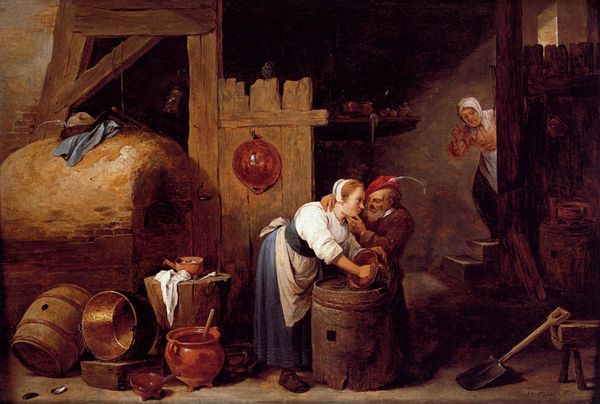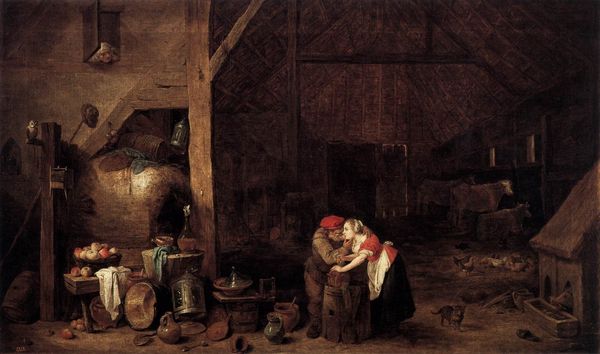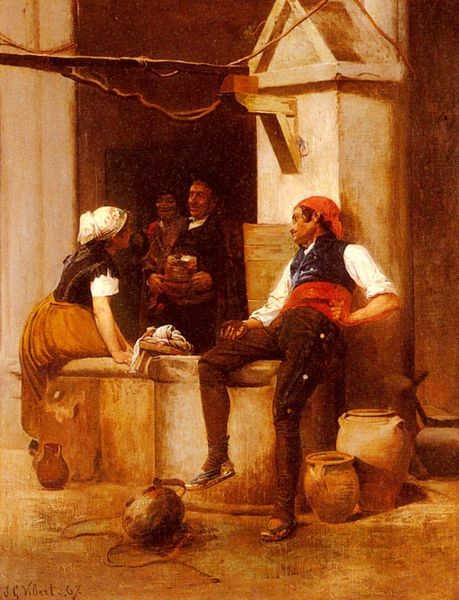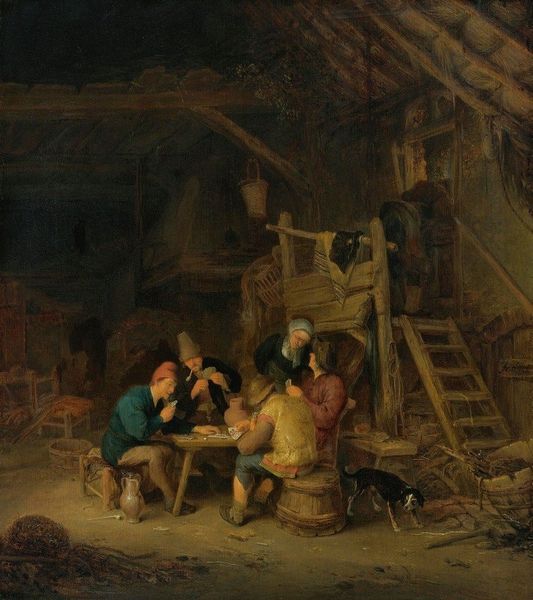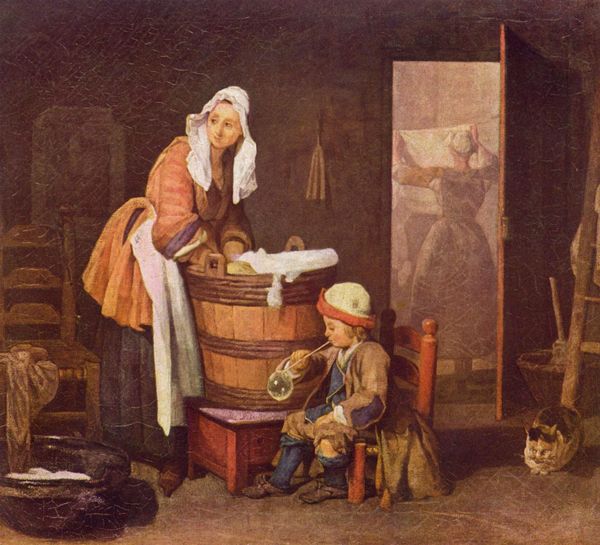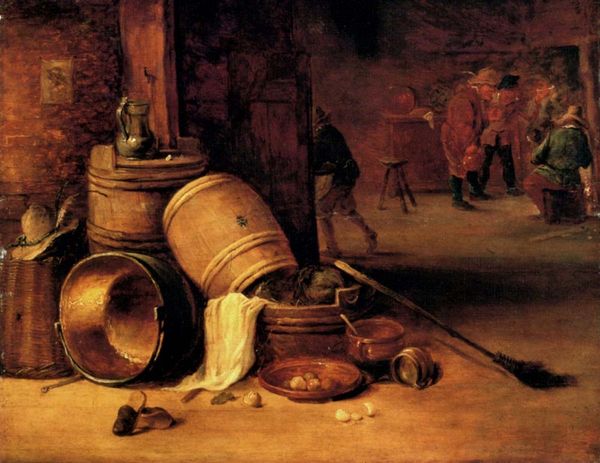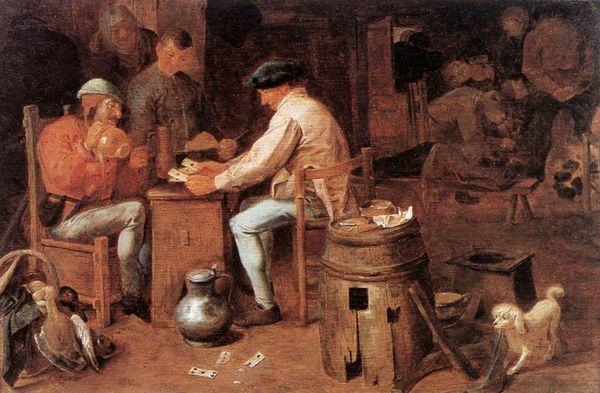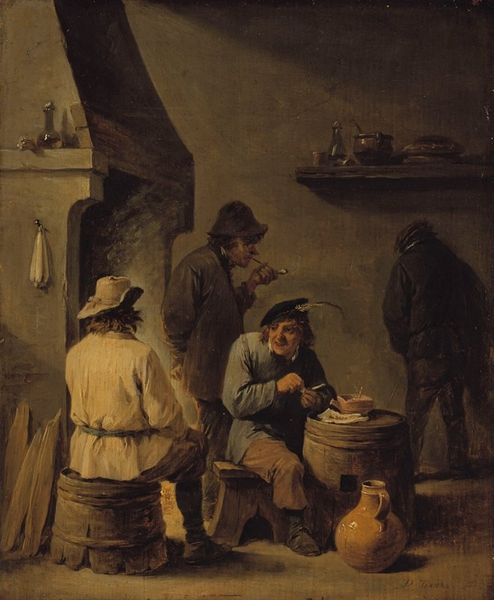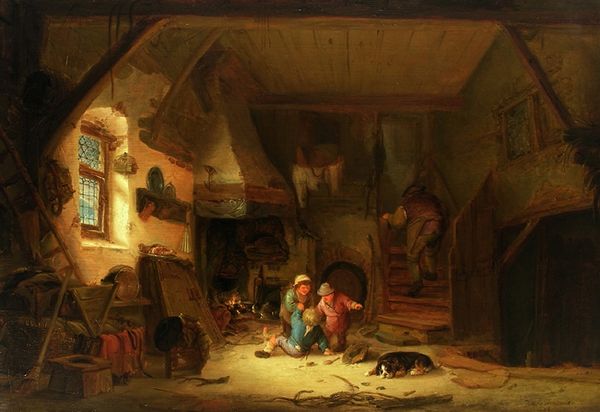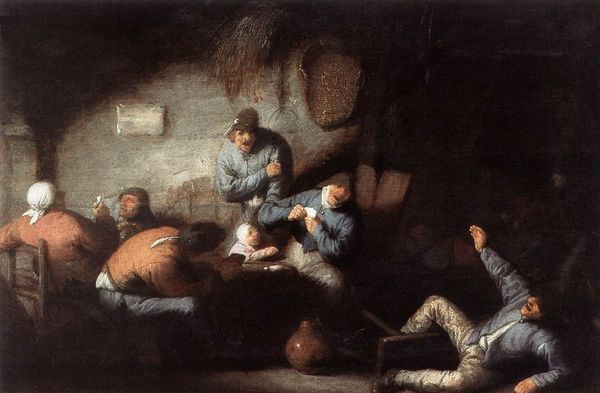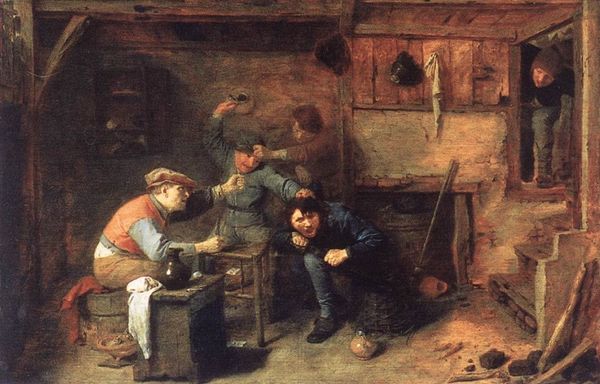
An Old Peasant Caresses a Kitchen Maid in a Stable 1650
0:00
0:00
painting, oil-paint
#
narrative-art
#
baroque
#
painting
#
oil-paint
#
landscape
#
figuration
#
oil painting
#
intimism
#
genre-painting
Dimensions: 43 x 65 cm
Copyright: Public domain
Editor: So, here we have David Teniers the Younger's "An Old Peasant Caresses a Kitchen Maid in a Stable," painted around 1650 using oil on canvas. It’s currently housed at the National Gallery in London. My first thought is how much it reveals about the dynamics of labor and relationships, with that intimate moment staged in what seems to be a pretty gritty setting. What do you see in this piece? Curator: What strikes me is the insidious nature of power dynamics displayed in this seemingly commonplace scene. Think about the genre painting tradition; it often idealizes peasant life, but Teniers subtly reveals the inherent inequalities. How might the social hierarchy of 17th-century Flanders – the vast disparity between wealthy landowners and the working class – inform this interaction? Editor: That's interesting. I hadn't considered the painting as a critique. I initially saw it as a fairly standard representation of everyday life, but thinking about the power dynamics makes it feel a lot more complex, especially given how the maid seems to be caught between compliance and resistance. Curator: Exactly. And consider the setting. A stable isn’t just a neutral backdrop; it represents the intersection of labor, class, and the subjugation of both humans and animals. How does the interior space itself become a site of oppression? What unspoken societal norms are being enforced here through this very intimate gesture of power? Editor: I see what you mean. It challenges this idea of idyllic peasant life we see in a lot of paintings from that time, pointing out exploitation in these intimate scenarios. Curator: Precisely. By examining art through a lens of social and political critique, we gain a deeper understanding of not just the artist's intention, but the cultural contexts in which these narratives took place. Editor: I think that perspective shifts my understanding of Baroque art, helping me look for what the artwork says about social context, rather than only aesthetics. Curator: Exactly. Engaging with these historical works with critical, intersectional awareness makes the past both visible and incredibly relevant today.
Comments
No comments
Be the first to comment and join the conversation on the ultimate creative platform.
